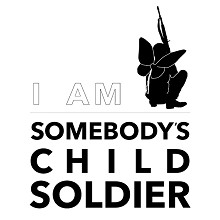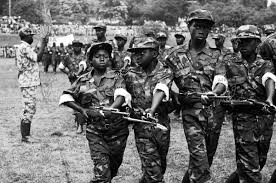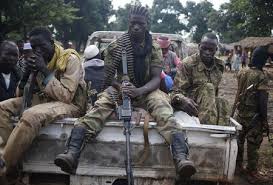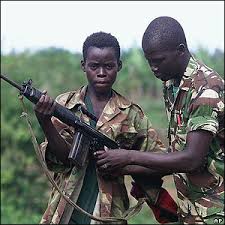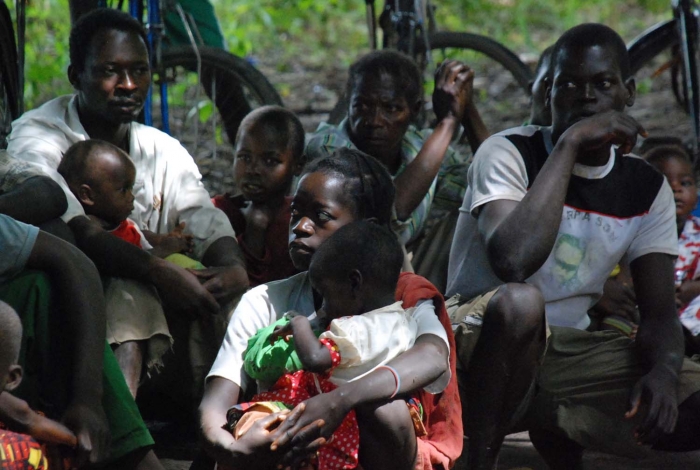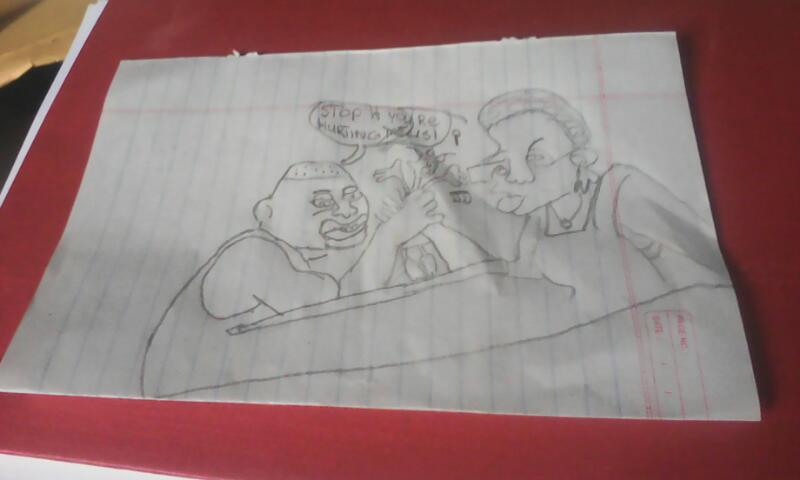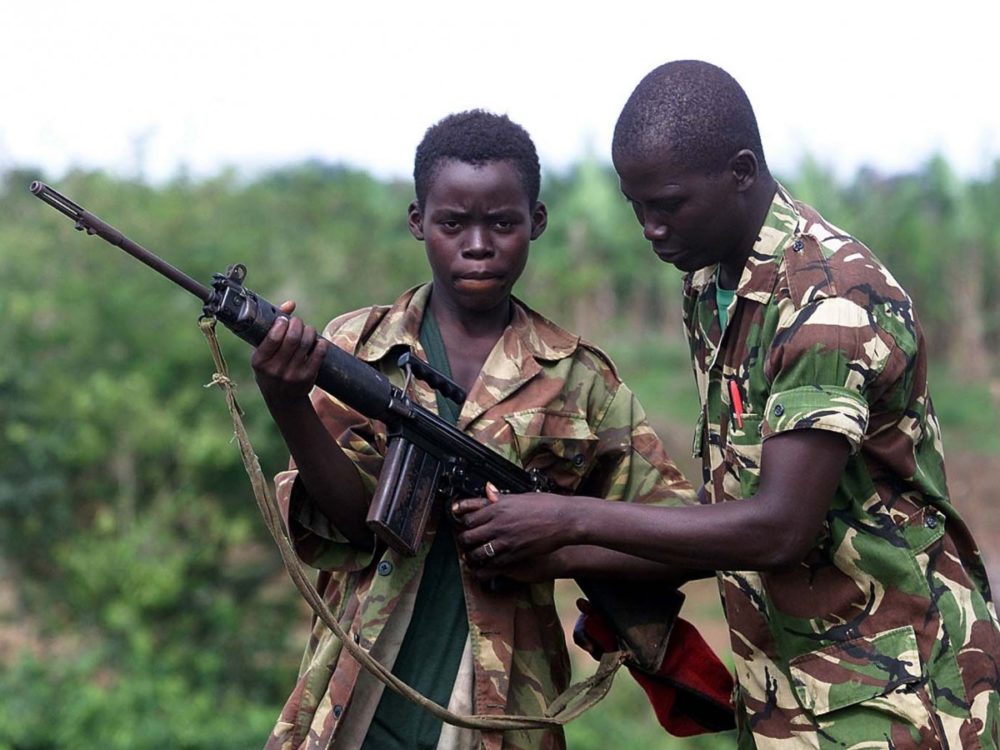What is the process from abductees to child soldiers?
According the Cambridge dictionary, the abduction is the act of making a person go somewhere with someone else, especially using threats or violence. When it is concerned child soldiers this process is tinted by a strong psychological aspect through indoctrination. Child soldiers are gradually relieved of their identity and humanity to become emotionless weapons of war as they are easier to control than adults.
The mechanism of indoctrination and control follows those steps:
1- Isolation and control of identity:
Once they were abducted from their villages or on their ways back home or school, children are strictly prohibited to speak with other child abductees on their way to the LRA camp located in the deepest bush. The LRA wants to isolate them and prevent children to create ties and to try to escape together. They can also give them new names as to imply it is the begin of a new life for them from now on, and at the sale time the end of the one they have up to now.
2- Public punishment to intimidate:
They are obliged to spend long hours walking in silence and are subject to physical punishment in case of disobedience. If a child try to escape, the other children are obliged to surrounding the fugitive and killed him with pieces of wood if they do not want to be also killed by the LRA members. Like this, they can ensure that children will be obedient and will not create any kind of ties between them.
3- Transience and instability:
LRA life is characterized by constant movement in the forest punctuated by violence and raid in the village to get foods as they can not get foods in the forest, what create a dependence from the child soldiers to their commandant and obedience to the group to survive.
Acting like this is a way to deprive the children of their civilian identity.
4- Assignment to a family structure:
Abductees are given to a trusted older commandant to be part of his family structure where they have the lowest ranking member and are subject to physical violence and any kind of abuse. This structure is basically composed of a commandant, his wives and children.
Girls are used as servants or sex slaves, or wives and have to follow not only the orders of the commandant but also those of the other wives.
Boys are either used to help carry supplies from the village for instance, or they are trained during one year to become soldiers. This year enable them to prove their loyalty and obedience to the group.
5- Witchcraft:
The final step of the mechanism of manipulation and control is shown by the use of magical rites on the children by using a form of oil and cutting. In Uganda as in many other african countries, a strong belief in magic rituals are spread among the population, and being witchcrafted is another and very effective way to dehumanize people and especially children who are easier to influence.
This step is also considered as the last one to become a child soldier, and most of them considered the mental changes they were facing since, are due to this witchcraft.
It is very important to underline that during all those steps, any kind of resistance will be punished by death, and the only way for those children to survive is to be an integral part of the group by giving up their former life, who they were and everything who made them individuals and human beings.
Source:
Abducted children and youth in Lord’s Resistance Army in Northeastern Democratic Republic of the Congo (DRC): mechanisms of indoctrination and control, Jocelyn TD Kelly, Lindsay Branham and Michele R. Decker, Conflict and Health
